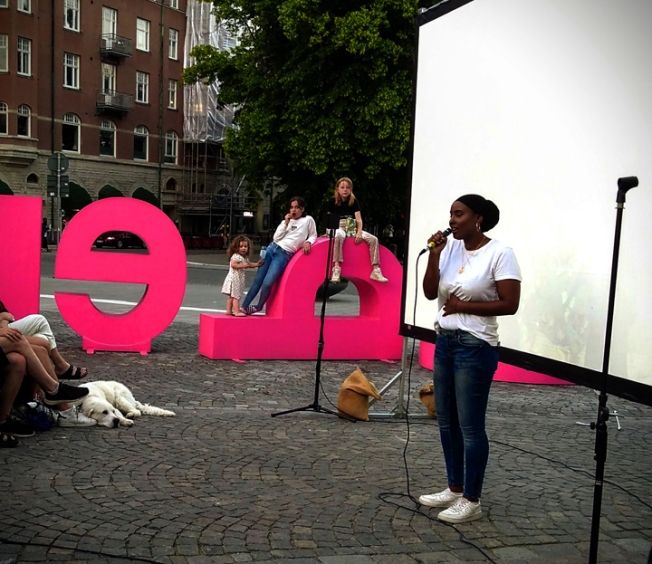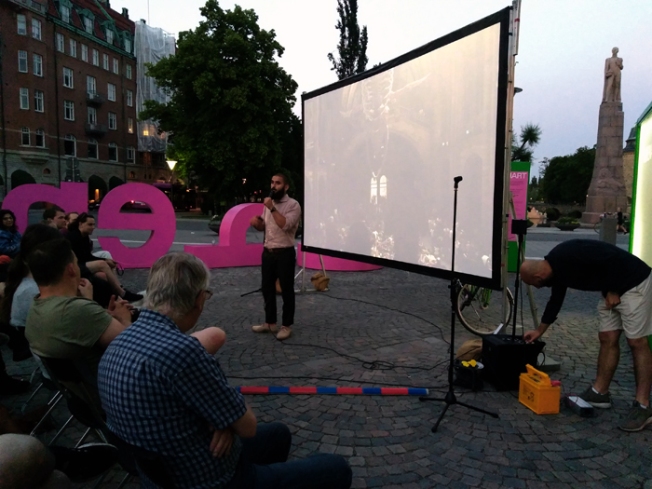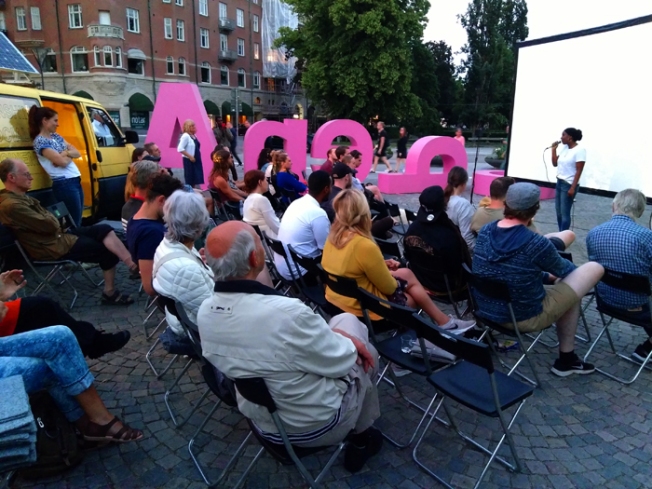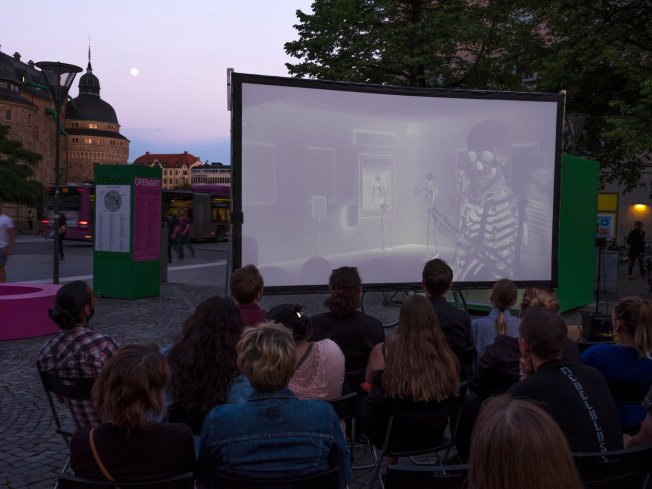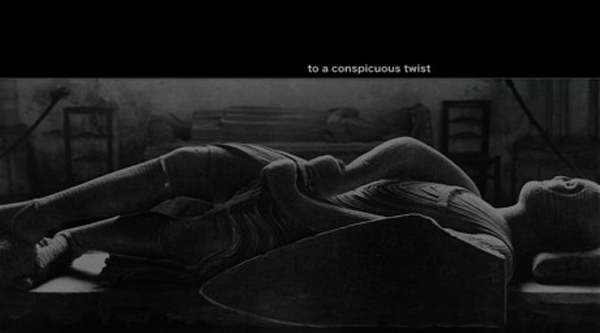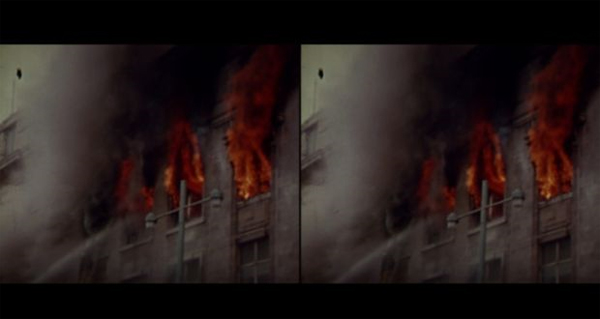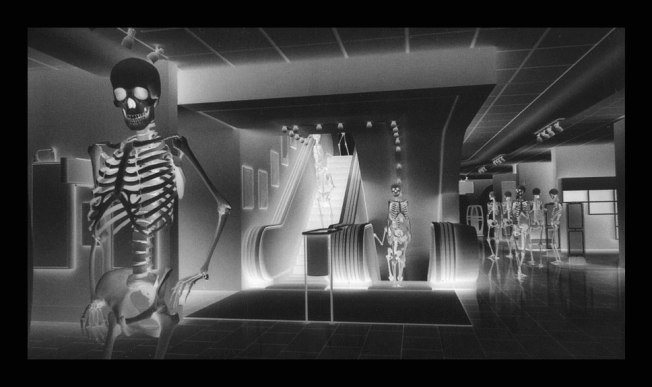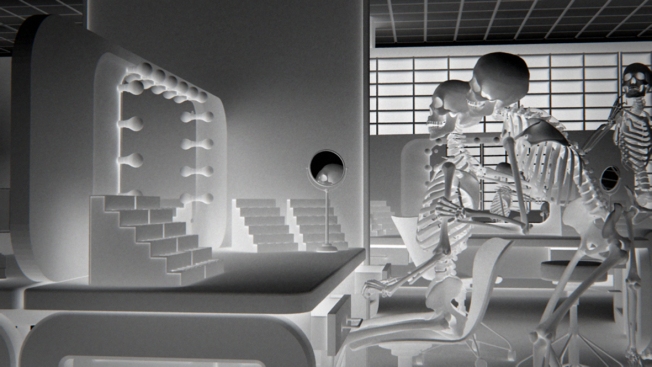
On June 15th we arranged a screening on Järntorget in Örebro, on the invitation of OpenART and in collaboration with Pennybridge Poetry. We screened a program of four films, with poetry readings inbetween each film.
Videos included in the screening: Procrastination by Björn Perborg; The Big Store by Lars Arrhenius and Johannes Müntzing; Grosse Fatigue by Camille Henrot; Where The Border Runs by Knutte Wester.
Big, big thank you’s go out to: all the people at OpenART that we met and/or communicated with; all the poets, filmmakers and other participants from Pennybridge; Knutte, Lasse, Johannes, Björn, and Camille for the videos; all the engaged audience members and all the randos passing by!

Pennybridge Poetry is a youth organization dedicated to the writing and performance of poetry, sometimes working in cooperation with campaigns such as Raise Your Voice. After this first date which we arranged together, Pennybridge Poetry will take over the cinema equipment and run their own screenings in Örebro for the rest of the season. Their next date will be on June 24.
Check out XOLA for previous collaborations somewhat along these lines.
